Media today is awash with stories of successful companies who are unprepared to make necessary changes to their business model and thus will remain locked in the past, hastening their pending demise.
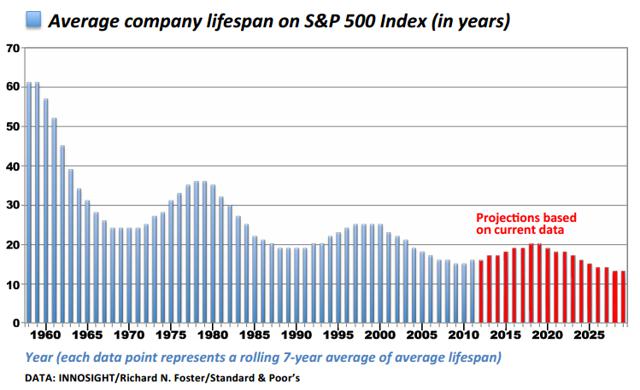 Graph demonstrating the speed of change. Source: Innosight
Graph demonstrating the speed of change. Source: Innosight
To others, it is logical that a fast-moving world mandates we should keep up with the new to maintain a competitive position. However, the pursuit of shiny ideas can also lead to the abandonment of proven ideas which could still deliver meaningful value.
Here is an outline of what this article talks about:
- How and why older business concepts regain prominence
- Notoriety of startups abandoning the old
- Lean startup methodology
- Importance of customer centricity
- Lean process & how a blind focus on MVP can destroy value
- Link with customer centric characteristic of Jobs To Be Done framework
- Big Bang Disruption or disruptive terrorism?
How and why older concepts regain prominence
There are certainly older concepts that need to be reassessed in the light of today’s market forces.
For example, Porter’s Five Forces is very contextual to the economic paradigms of the time. While some of it still holds value, newer theories have come about to better describe forces emerging with internet and digital technologies. An example worth having a look at is Ben Thompson’s Aggregation Theory.
Interestingly, some outcomes of Aggregation Theory recommend the customer (a real person, not just a persona) needs to take a prominent position in a company’s strategic and tactical focus. This dynamic is bringing a few older concepts back into today’s business toolkit.
As a prime example, we don’t apologise for Enabled’s use of Human Centred Design (HCD) - a process brought into significant prominence during the 1980s by industrial design firm IDEO. Or the Jobs To Be Done (JTBD) theory was coined by Harvard Business School professor Clayton Christensen in 2003 as a catch phrase for Outcome-Driven Innovation (ODI) by Tony Ulwick, who has been awarded innovation patents since late 1999.
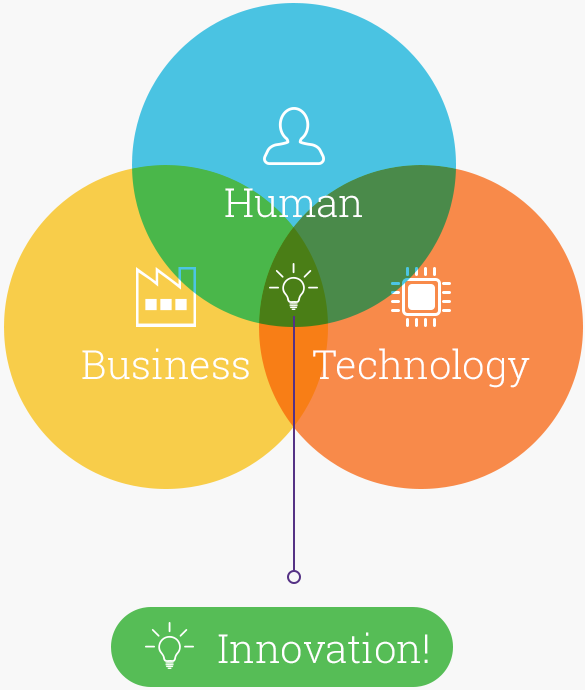 Enabled’s use of Human Centred Design
Enabled’s use of Human Centred Design
Both of these put the customer in the centre and seek to understand the needs that arise from the problems they face. Once these are understood, new business offerings are carefully aligned to these needs, creating clear value for the customer, leading to greater likelihood of market success.
We use these slightly older but still valid concepts successfully with many clients. This gives them an innovative edge and their customers always value how well the product or service addresses their needs.
So who would abandon these concepts?
Although old techniques remain a driver of real innovation, an industry segment notorious for abandoning the old in pursuit of the shiny and new is the Startup and Innovation scene.
Ironically, many players in this segment are unintentionally destroying value as quickly as they create it. Worse, some never even start with a value proposition in the first place.
I draw attention to this as during a recent conversation, I received criticism of our use of Jobs To Be Done, and our instruction of our clients in these methods. The criticism I received went something like: “Those old concepts… You need to get current! We use Lean Startup.”
I don’t mind criticism as it is an avenue for learning. However, the inference of this statement is that Lean Startup replaces HCD and JTBD and is better by far. Is this stance valid?
The Lean Startup framework & linkage to others
First, let’s explore Lean to see what it’s really about.
The Lean Startup concept was first proposed by Eric Ries in 2008. It borrows from Lean Manufacturing which has its roots in the early to mid 1900s, reaching its heights in the 1990s demonstrated by the Toyota Production System.
Ries observed that Startups operate under conditions of extreme uncertainty and this can lead to tremendous waste.
His rationale for Lean’s creation is that too many startups begin with an idea for a product that they think people want. After spending substantial time and budget, they eventually find their project idea was never desired by their would-be customers.
Customer centricity
From this perspective Lean methods do not preclude the use of tools like JTBD.
Rather they would almost mandate its use, especially as JTBD tries to identify problems and pains that people face, rather than starting with just a neat idea. It is important to stress that problems worth solving are associated with a customer’s strong motivation to partake!
Ries also stated that “Success is not delivering a feature, it is learning how to solve the customer’s problem.”
The first part of this quotation from the Lean Startup principles seems to back up a problem-centric process which would benefit from JTBD:
“The first step is figuring out the problem that needs to be solved and then developing a minimum viable product (MVP) to begin the process of learning as quickly as possible.”
However, it is the second part of this statement which presents the danger to the practitioner, and is often the part which receives the most emphasis at innovation programs.
The MVP obsession
This is best explained by examining the lean process diagram from the same website:
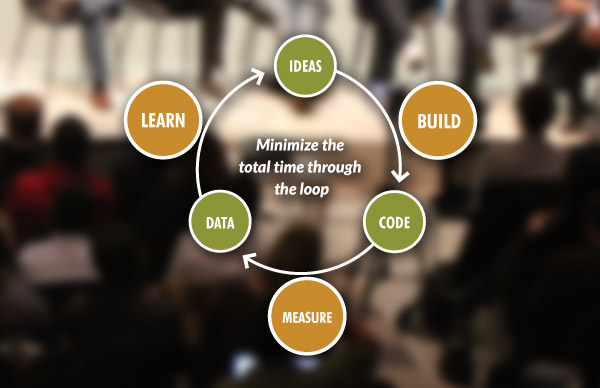
- The first step in their cycle is to start with an idea then spend as little time as possible coding or building an MVP product.
- Second, this MVP is given to potential customers where feedback (data) is measured indicating their likes and dislikes.
- Finally, learning from this customer feedback is placed back into the beginning of the cycle to reshape the idea, then the cycle repeats as quickly as possible.
On the surface, the cycle is an intelligent one. There is no point spending too much time making the perfect product before understanding its market effectiveness.
This MVP strategy is an ideal that we use and teach, even if this MVP is a prototype which can be tested internally or by a small sample of customers.
On a side note, this very fast cycle serves the players on the capital supply side more than the would-be innovator. This pace allows Investors and VCs to observe many more ideas, basically throwing more at the wall, more often, to see what sticks.
However, too much store is placed in the hope that quick iterations of feedback will shape an idea into a successful product. In our experience, this is not an optimal pathway.
It is important to stress that problems worth solving are associated with a customer’s strong motivation to partake.
People are generally very happy to help you improve your idea, this does not mean they will become a customer. Often, feedback collected from less enthusiastic people - referred to as a false objection - signals they never really want to buy your product.
In this situation they simply pick a feature they know you cannot presently deliver, in order to escape what they feel is an interrogation process.
This is especially true of many innovation programs where Lean is used. Very little is done to help participants determine if their idea is solving a true problem, which if solved, represents real value for the person suffering from the problem. Rather, the emphasis is on this fast cycle of guess work, experimentation and necessary pivots based on the feedback collected.
Better together
Entrepreneur Ash Maurya - whose book “Running Lean” is featured on the Lean Startup website - successfully combined the use of JTBD and Lean principles to enhance his product.
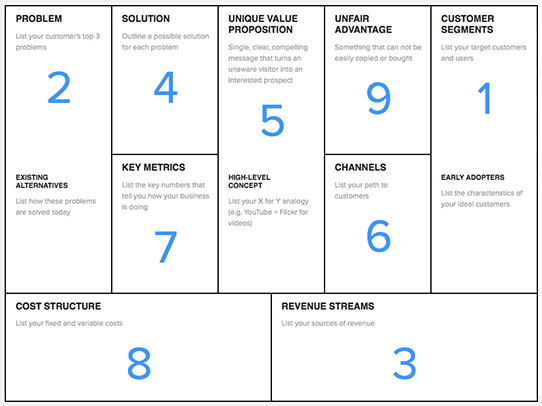 The Lean Canvas. Source: Lean Stack
The Lean Canvas. Source: Lean Stack
You can read about the story of how Ash created the Lean Canvas based on the Business Model Canvas (a foundational tool often used in Lean Startup courses) to better serve entrepreneurs; and how he later used JTBD to enhance the Lean Canvas, expanding it into the Lean Stack.
The main lessons from Ash’s journey are:
- Start with the problem your users/customers face
- Resist the temptation to over-engineer the product by focusing on what customers hire the product for (their JTBD)
- Develop complementary products to help customers solve related jobs (e.g. Lean Canvas => Lean Stack)
Moreover, when asked about the Lean Startup and JTBD frameworks, this was his reply:

Interestingly, this Q & A happened through the customer messaging platform Intercom - another big proponent of JTBD.
This is why Lean methods are not a replacement to Jobs To Be Done and in typical use, they certainly aren’t better at determining if a real problem is being addressed.
JTBD is indeed an excellent framing tool to find a starting point where ideas and solutions can emerge. This can then become the input into Lean methods and likely reduce the required cycles.
Reducing these cycles is particularly important when used with larger companies who can be very sensitive to the wheel spinning that occurs when Lean Startup methods are used ineffectively.
Putting human back at the centre
The irony is that although Human Centred Design and Jobs To Be Done have been around for some time already, they are only just gaining traction with the broad business community.
The shift away from local markets with scarcity on the supply side towards massive global choice by consumers on the demand side, coupled with consumer social connectedness, is providing considerable motivation for businesses to understand the real people who are their customers.
It is for this reason that we increasingly use these concepts and also the reason why the Tech eChallenge innovation program that we run for Adelaide University is based on true HCD principles with JTBD at its core.
Proof of the effectiveness is in the feedback from the students of the course and the awards they win. You can see this year’s Tech eChallenge winners here.
Is fast always good?
As to the wannabe startups and innovation program organisers, I expect these groups will always index on the new at the expense of the old.
Case in point, one of the most recent strategies is to speed up the innovation cycle method so much that it eliminates all instructions toward developing sustainable business.
What does this strategy look like?
Labeled “Big Bang Disruption” by Larry Downes and Paul Nunes, the process is to conduct “random experiments” without any kind of strategic vision or direction and see what happens.
The hope is that something will emerge which is immense and grows rapidly, taking all air out of the industry being targeted.
Trouble is, just like an explosion, everything (including the disruptor) comes crashing down almost as fast as it went up.
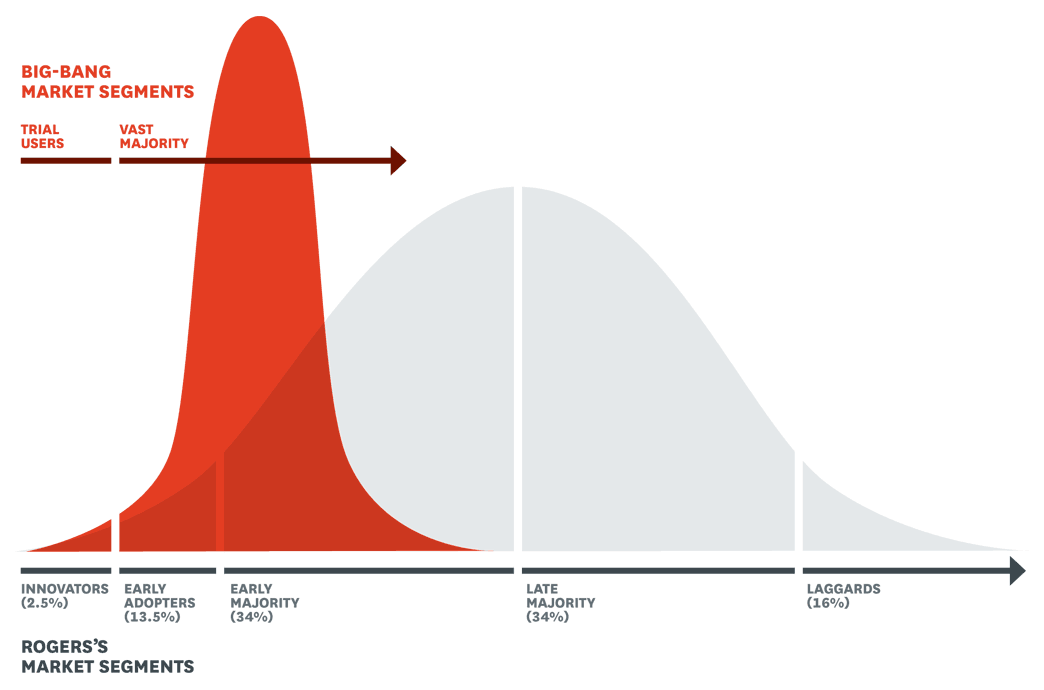 Source: Harvard Business Review
Source: Harvard Business Review
This isn’t innovation. This is just disruptive terrorism and real innovative enterprises can only become collateral damage.

